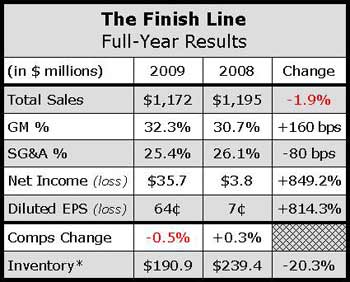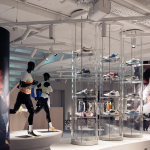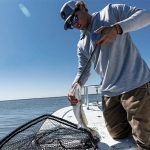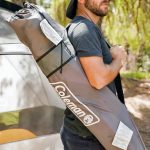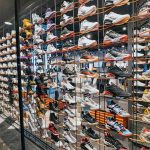The Finish Lines revenues rose 8.9% to $374.5 million in their fiscal fourth quarter ended February 27, propelled by a 10% same-store sales hike on the strength of the running and toning categories. Net earnings came to $30.6 million, or 55 cents per share, for the period, rebounding from a year-ago net loss of $1.4 million, or 3 cents per share. Excluding special items, income from continuing operations vaulted 50.7% to $33.3 million, or 61 cents a share, from $22.1 million, or 41 cents, a year ago. Results far exceeded analysts average expectation of 48 cents per share.
On a conference call with analysts, company CEO Glen Lyon said the results came in better than internal plans even as negative store traffic trends continued throughout the fourth quarter.
The bottom line in the latest period included a $2.6 million pre-tax charge for gift card forfeitures, as well as a $6.8 million pre-tax store asset impairment charge. Prior-year results included a pre-tax charge of $6.1 million for store impairments and pre-tax income of $2.1 million related to its terminated merger with Genesco.
The fourth quarter comp gain compared to a 2.3% comp decline in the prior-year period and was driven by a 3% gain in conversion and a 7% increase in average dollars per transaction. Those gains offset an almost 3% traffic decline. By month, comps grew 10.7% in December, 10.3% in January and 8.7% in February. On a category basis, footwear comps were up 10.2% – up 10.4% in December, up 10.7% in January and up 9.7% in February. Softgoods sales grew 8.6% in Q4.
Footwear ASPs improved 7% due to improved full-price selling, said Steve Schneider, president & COO. The sales gains came despite a an 11% per square foot reduction in inventory at the beginning of the quarter and 15% decrease at the end of the quarter. For the full year, footwear comps were slightly negative with ASPs up over 4%.
The running category posted double-digit comp increases at higher product margins, with strength in both mens and womens. Running was led by Nike, paced by lightweight models such as Lunar and Free, as well as Air Max and retro-inspired silhouettes. Schneider said Puma running came on stronger in Q4 with Jago remaining hot, but other Puma models also started to contribute. For the full year, running comps were up in double-digits.
In basketball, Q4 comps were up mid-single digits driven by Brand Jordan, as well as Lebron and other signature products. For the year, basketball comps were down mid-single digits.
Toning also created strong demand in the period, led by Skechers and Reebok. In an interview with Sports Executive Weekly, Chief Merchandising Officer Sam Sato said they quickly sold through all the product they were able to get from Reebok and have since been able to get back in stock. It was a nice add to our biz, said Sato. We believe it will be one of our big winners this year, especially as more brands get into the business. New Balance and Avia have both gotten into the category.
One weaker category was athletic casual, which saw mid-teens declines for both the quarter and the year. The men’s business performed better than womens. One bright spot was men’s Polo, which was launched late in the third quarter, giving Finish Line its first full quarter with Polo. Said Schneider, We like where this brand is heading and expect to see continued positive results as we work with Polo to expand and enhance our assortment.
In kids, comps grew almost 7% for the quarter and were up slightly for the year, with girls stronger than boys. Nike Air Max, Puma and exclusive products performed well. Brand Jordan and Skechers Twinkle Toes also did well.
The soft goods gain reflected solid gains in both apparel and accessories. The full-year comp for soft goods was down less than 1%. Apparel saw particular strength in the quarter in branded products from The North Face, Brand Jordan and Under Armour. Licensed products were positive, with particular strength in NCAA fleece.
In accessories, gains in Q4 were led by sunglasses, watches and socks.
E-commerce sales were up 46% in the quarter and 21% for the year with continued improved profitability. In-store pick-up sales continue to accelerate, with sales through its We Have Got It program up 59% in the quarter and 53% for the year. Sales from catalog and direct mail increased 47% for the year as FINL continued to focus on repeat purchases through its Winner’s Circle customer loyalty program, which saw a 24% increase in sign-ups for the year.
Excluding the $2.6 million charge related to gift card forfeitures in the current year, gross margins improved 270 basis points to 35.9% for the quarter. Product margin was up 140 basis points due to selling more full-price premium product and inventory management while occupancy was leveraged by 130 basis points. SG&A expenses in the quarter decreased by 150 basis points to 21.1% of sales.
